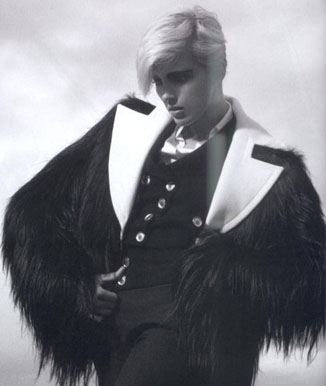Difference between revisions of "NaosArchives-Valkyries"
| Line 10: | Line 10: | ||
| http://oakthorne.net/pics/wiki/naos/Reginleif.jpg | | http://oakthorne.net/pics/wiki/naos/Reginleif.jpg | ||
|} | |} | ||
| + | ''Historical Notes'' | ||
| + | |||
Reginleif appears only briefly in the Norse Eddas, mentioned in Snorri's Edda, excerpted below: | Reginleif appears only briefly in the Norse Eddas, mentioned in Snorri's Edda, excerpted below: | ||
{| | {| | ||
| Line 73: | Line 75: | ||
Reginleif's whereabouts since the advance of Christendom are largely unknown, though she is thought to have fallen in love with Fredrick I of Denmark. The identity of Fredrick I's valkyrie lover is uncertain, she is known to have gained an immense dislike of Protestantism thanks to Fredrick's difficulties with the emerging movement in the early 1500s. | Reginleif's whereabouts since the advance of Christendom are largely unknown, though she is thought to have fallen in love with Fredrick I of Denmark. The identity of Fredrick I's valkyrie lover is uncertain, she is known to have gained an immense dislike of Protestantism thanks to Fredrick's difficulties with the emerging movement in the early 1500s. | ||
| + | |||
| + | ''Modern Notes'' | ||
It is suspected that this valkyrie was Reginleif because when Reginleif first comes to the full attention of the Naos Group, it was as part of the Third Reich. She carried her immense dislike of Christianity (and indeed, Abrahamic faiths in general) into her activities with the Thule Society there. | It is suspected that this valkyrie was Reginleif because when Reginleif first comes to the full attention of the Naos Group, it was as part of the Third Reich. She carried her immense dislike of Christianity (and indeed, Abrahamic faiths in general) into her activities with the Thule Society there. | ||
Reginleif's horn summons a number of ''einherjar'', all of whom were chosen from the finest soldiers of the Third Reich. She refers to these ''einherjar'' as her ''Sturmwulves''. Her mount is a massive shaggy black wolf by the name of Hjartfanu, which means "Heart-Biter." | Reginleif's horn summons a number of ''einherjar'', all of whom were chosen from the finest soldiers of the Third Reich. She refers to these ''einherjar'' as her ''Sturmwulves''. Her mount is a massive shaggy black wolf by the name of Hjartfanu, which means "Heart-Biter." | ||
Revision as of 11:19, 6 February 2008
Servants and daughters of Odin, the Valkyries are demigods responsible for gathering the bravest of the dead, choosing the most valiant for continued existence in Valhalla. They are known for being incredible warriors themselves, and are associated with ravens and wolves (which they actually ride - the so-called "valkyrie horse" being a skaldic kenning for the wolves that scavenge corpses after a battle).
The warriors of Valhalla - chosen by the Valkryies - will provide the Aesir with a great army composed of incredibly potent warriors on the day of Ragnarok. It should be noted that the einherjar, as these soldiers are called, are not ghosts or undead; they are snatched up at the last moment before death and given immortality in Valhalla. The Valkyrie are known to carry horns which allow them to summon a number of einherjar at their will. When slain, these warriors do not die permanently. By using her horn a second time, the Valkyrie may return the einherjar to Valhalla, living or dead. Once there, she need only invite them to eat and drink, and they rise again, perfectly healthy, to feast and fight again.
Known Valkyries
The following are known Valkyries active in the world today.
Reginleif

|
Historical Notes
Reginleif appears only briefly in the Norse Eddas, mentioned in Snorri's Edda, excerpted below:
|
|
She is also mentioned in the Grímnismál, quoting Odin, as below:
|
|
Reginleif's whereabouts since the advance of Christendom are largely unknown, though she is thought to have fallen in love with Fredrick I of Denmark. The identity of Fredrick I's valkyrie lover is uncertain, she is known to have gained an immense dislike of Protestantism thanks to Fredrick's difficulties with the emerging movement in the early 1500s.
Modern Notes
It is suspected that this valkyrie was Reginleif because when Reginleif first comes to the full attention of the Naos Group, it was as part of the Third Reich. She carried her immense dislike of Christianity (and indeed, Abrahamic faiths in general) into her activities with the Thule Society there.
Reginleif's horn summons a number of einherjar, all of whom were chosen from the finest soldiers of the Third Reich. She refers to these einherjar as her Sturmwulves. Her mount is a massive shaggy black wolf by the name of Hjartfanu, which means "Heart-Biter."